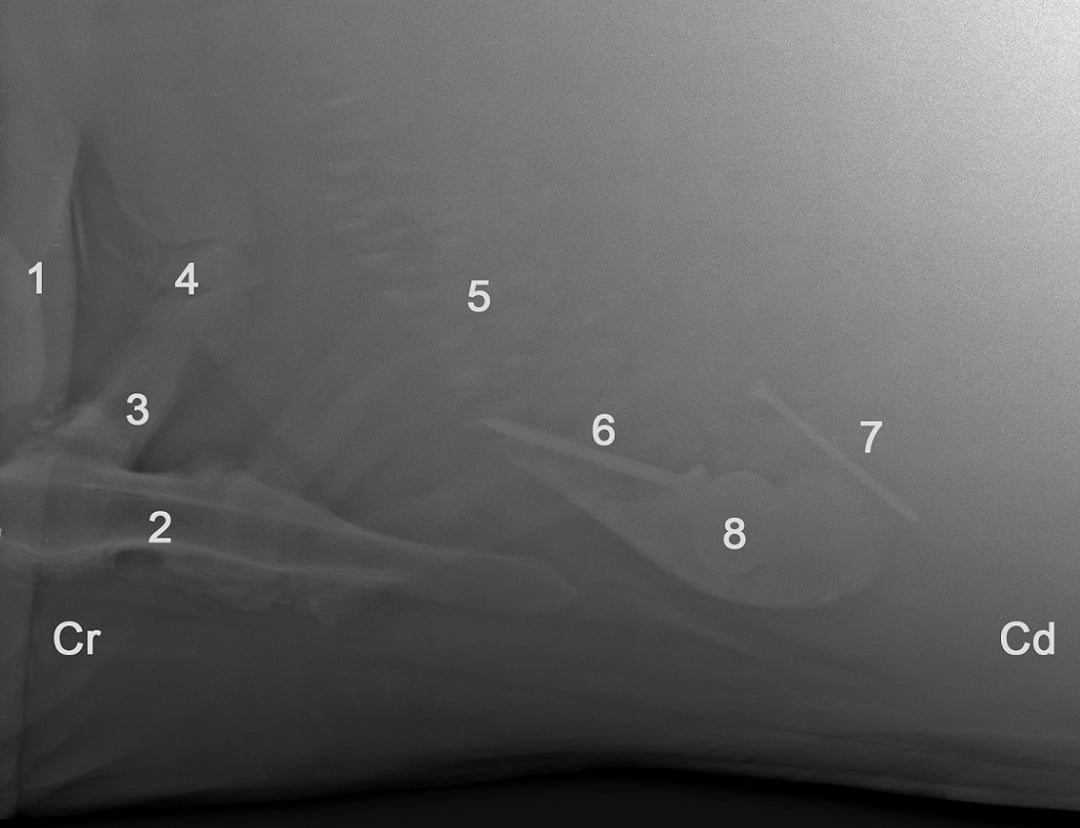Important bovine Dx topic
Overview
Also known as hardware disease, traumatic reticuloperitonitis (TRP) occurs when cattle accidentally ingest sharp objects (e.g., nails, wire) that lodge in the reticulum and puncture its wall, leading to localized or diffuse peritonitis, and occasionally pericarditis if the object migrates cranially (veterinarypartner.vin.com).
Etiology & Epidemiology

- Ingested Objects: Metallic (nails, baling wire, tyre wire) or nonmetallic such as plastic (en.wikipedia.org).
- Risk Situations: Contaminated silage, feed processing near construction or waste sites (nadis.org.uk).
- Prevalence is 2–12% in adult dairy cattle, higher in beef operations with poor feed hygiene (veterinary-practice.com).
Clinical Signs
Acute TRP:
- Sudden anorexia, decreased milk, fever, rumen atony, tympany.
- Abdominal pain: arched back, grunting, hunched posture, reluctance to move (veterinary-practice.com).
Chronic TRP:
- Intermittent anorexia, suboptimal milk yield, mild pain, mild fever, poor digestion, adhesions forming over time (merckvetmanual.com).
Complications can include pericarditis, pleuritis, hepatic/splenic abscesses, vagal indigestion .
Diagnosis
- Clinical exam & history: pain tests (grunting pole test, leg press, withers pinch) (merckvetmanual.com).
- Laboratory: elevated fibrinogen, globulins, AST, and total plasma protein (researchgate.net).
- Imaging:
- Ultrasound reveals fibrinous deposits, reticular adhesions (scialert.net).
- Radiographs can detect metallic objects within the reticulum (veterinarypartner.vin.com).

Find more about it here
Treatment
Medical (Conservative)
- Administer an oral rumen magnet to capture loose metal (pmc.ncbi.nlm.nih.gov).
- Appropriate antibiotics (e.g., penicillin, ampicillin, tetracyclines, ceftiofur) for 5–7 days .
- NSAIDs for pain and inflammation; IV fluids as needed .
- Monitor response. If the foreign body attaches to the magnet within 2–4 days, continue conservative therapy; otherwise, consider surgery (pmc.ncbi.nlm.nih.gov).
Surgical Intervention
- Rumenotomy indicated if the object fails to attach or perforates the reticulum.
- Techniques include extraperitoneal and Weingarth ring procedures (pmc.ncbi.nlm.nih.gov).
Prognosis
- Conservative treatment has an ~82% success rate when the foreign body attaches to the magnet; surgical success is ~90% in operated cases (pmc.ncbi.nlm.nih.gov).
- Delays increase risk of complications and reduce prognosis .
NAVLE-Style Multiple-Choice Questions
Question 1: Diagnosis
A dairy cow presents with acute ruminal tympany, fever, arched back, and grunting during caudal abdominal palpation. What is the most likely diagnosis?
A. Vagal indigestion
B. Hardware disease (traumatic reticuloperitonitis)
C. Left displaced abomasum
D. Pericarditis
E. Abomasal ulcer
Correct Answer: B
Explanation: Characteristic signs—ruminal atony, fever, and positive grunt test—are classic for acute hardware disease (veterinary-practice.com).
Question 2: Initial Management
An adult cow suspected of TRP has ultrasound-confirmed fibrinous lesions but no radiographic evidence of a foreign body contacting a magnet. What’s the best first step?
A. Immediate rumenotomy
B. Administer rumen magnet and start antibiotics plus NSAIDs
C. Begin steroid therapy
D. Restrict water intake
E. Euthanize immediately
Correct Answer: B
Explanation: Conservative treatment is indicated initially – magnet, antibiotics, NSAIDs, and reassessment within 3–4 days (pmc.ncbi.nlm.nih.gov, merckvetmanual.com).
Question 3: Prevention
Which management strategy most effectively prevents hardware disease?
A. Providing free-choice grain
B. Feeding magnets at weaning, removing metal from feed areas
C. Routine deworming
D. Maintaining cows on pasture only
E. Regular rumenotomy
Correct Answer: B
Explanation: Administering a rumen magnet early and removing metal debris from feed are key preventive measures (veterinary-practice.com, en.wikipedia.org, nadis.org.uk).
References
- Merck Veterinary Manual – Traumatic Reticuloperitonitis
- Veterinary Partner – Hardware Disease in Beef Cattle
- Orpin & Harwood (2008). In Practice – Clinical Management of Traumatic Reticuloperitonitis
- Braun U. et al. (2018). Comparison of magnet vs surgery treatments in 503 cattle (PMC)
- NADIS – Traumatic Reticulitis in Cattle
- University of Minnesota – Large Animal Surgery: Hardware Disease